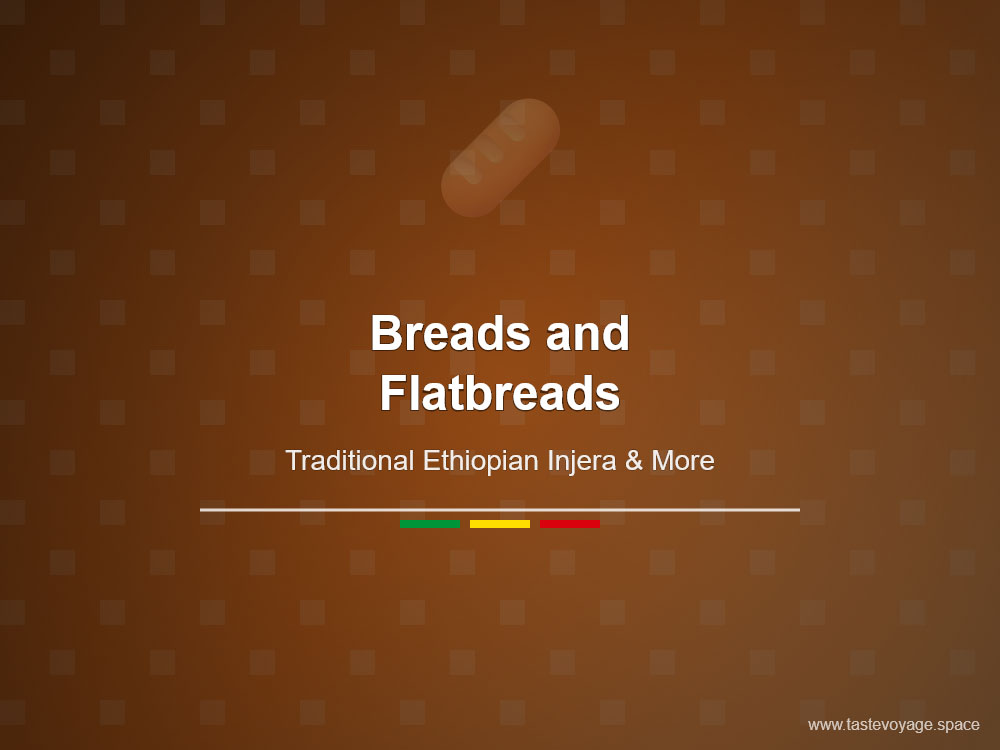Make Ethiopian Injera Without Teff Flour: Easy Recipe Guide
Travel the World Through Food >> Breads and Flatbreads>>Ethiopian Cuisine>> Make Ethiopian Injera Without Teff Flour: Easy Recipe Guide
Make Ethiopian Injera Without Teff Flour: Easy Recipe Guide
How to Make Ethiopian Injera Without Teff Flour: Celebrating Culinary Heritage
Ethiopian cuisine boasts a rich tapestry of flavors, textures, and traditions. Central to many Ethiopian meals is injera, a spongy flatbread that is both a staple and a cultural symbol. Traditionally made with teff flour, injera has an unmistakable tangy flavor and unique texture that make it a beloved dish. However, many people wonder How to achieve this iconic bread without teff flour, whether due to dietary preferences or ingredient availability. While exploring alternative ingredients, it’s essential to appreciate the deep cultural and culinary significance of injera and its role in Ethiopian hospitality and community life.
The Cultural Significance of Injera
Injera is more than just a bread; it is a unifying element at Ethiopian tables. It acts as both plate and utensil, with various dishes served on top or beside it. This communal style fosters a sense of sharing and togetherness, reflecting Ethiopia’s strong emphasis on community and hospitality. In many households, preparing injera is a cherished tradition, passed down through generations. The process of making and sharing injera symbolizes warmth, kinship, and respect, making it an integral part of social gatherings and celebrations.
The Culinary Role of Injera in Ethiopian Cuisine
Ethiopian cuisine is characterized by complex flavors and a variety of stews, vegetables, and legumes. Injera complements these dishes perfectly. Its airy, slightly sour profile balances spicy, savory flavors while providing a neutral base that enhances various ingredients. The texture of injera, with its holes and spongy consistency, allows it to soak up sauces beautifully, adding depth to every bite. It also acts as a natural utensil, with pieces torn off and used to scoop up lentils, meats, or vegetable medleys, making the dining experience both functional and convivial.
The Significance of Teff and Its Alternative Uses
Teff, a tiny grain native to Ethiopia, is celebrated for its nutritional value and unique flavor. It is traditionally used in injera baking, giving the bread its characteristic taste and texture. However, teff can be hard to find or expensive outside Ethiopia. This has led many culinary enthusiasts to explore alternative grains and flours—such as barley, millet, sorghum, or wheat—to recreate injera’s distinctive qualities. While these substitutes might alter the flavor slightly, they honor the essential spirit of the dish: a nourishing, communal bread that ties people together.
Embracing Diversity in Injera Preparation
Making injera without teff flour provides an exciting opportunity to explore diverse grains and adapt traditional recipes to different tastes and dietary needs. It also broadens the understanding of Ethiopian culinary traditions, highlighting how adaptable and inspiring this food can be. The heart of injera remains its role as a symbol of sharing and togetherness, regardless of the specific ingredients used.
Honoring the Culinary Heritage
While experimenting with different flours, it is important to respect the cultural roots and significance of injera. Appreciating its history helps us understand why this dish holds such a special place at Ethiopian tables. Whether made with Traditional teff or alternative grains, injera continues to serve as a bridge—connecting people through the universal language of food and community.
Closing Thoughts
Injera’s culinary significance extends beyond its ingredients. It embodies kindness, tradition, and the joy of sharing a meal. Trying to make injera without teff flour opens new pathways to experience and celebrate Ethiopian food. It invites us to appreciate the flexibility, creativity, and cultural richness behind this iconic bread. No matter the ingredients, injera remains a symbol of connection—a delicious reminder of Ethiopia’s vibrant culinary heritage.
